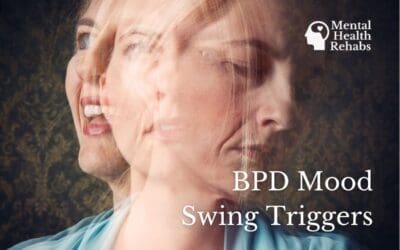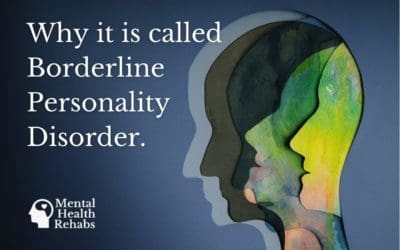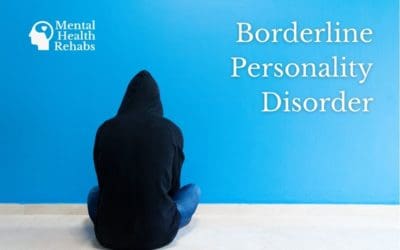Borderline Personality Disorder.

What Is Borderline Personality Disorder?
Also called emotional dysregulation disorder, BPD is a common mental disorder characterized by unstable behaviors and moods. Symptoms include emotional instability, insecurity, impulsivity, and impaired relationships. In most cases, BPD starts in early adulthood. The condition worsens in young adults and gradually gets better with age.
The causes of BPD remain unknown, but scientists believe it’s a combination of:
- Genetics
- Hereditary factors
- Environmental factors
- Exposure to traumatic life events
- Brain function, particularly portions of the brain related to emotional control and decision-making
Criteria for BPD Diagnosis
The DSM, published by the American Psychiatric Association, sets the criteria for a BPD diagnosis. There are no definitive medical tests to diagnose a borderline personality disorder, and diagnosis is not based on one specific symptom. A mental health professional best diagnoses BPD following clinical interviews that include reviewing previous medical evaluations, interviews with friends and family, and talking to prior clinicians.
Symptoms Unique to Borderline Personality Disorder
BPD symptoms include mood swings, emotional instability, and insecurity. However, some unique symptoms of borderline personality disorder. In order to be diagnosed with BPD, a person must exhibit five or more of the following:
- Chronic feelings of worthlessness and emptiness
- Steady emotional instability in reaction to daily events
- Efforts to avoid real or imagined abandonment from friends and family
- Impulsive behavior that can be self-damaging
Inappropriate, difficult to control, or intense anger that includes displays of temper and recurrent physical fights - A pattern of unstable and intense social relationships characterized by extremes between idealization and devaluation
- Suicidal behavior or self-harming behavior
- Stress-related paranoid ideation
- Severe dissociative symptoms
Treating Borderline Personality Disorder
While there’s no cure for BPD, it can be treated and managed with psychotherapy and medications. Most people experience the best results with a combination of medication, psychotherapy, and peer support. People with co-occurring conditions should find a treatment plan that addresses these conditions. These are the most common treatment options:
Psychotherapy
Medications
Peer Support
In some cases, hospitalization might be needed primarily when the person is exhibiting self-harm or suicidal behavior. Short-term hospitalization might be required during times of extreme stress to ensure safety.
Borderline Personality Disorder and Substance Abuse
About 50% of those with borderline personality disorder also have a history of substance abuse. Because people with BPD often experience feelings of emptiness and disconnection, they may turn to substances like alcohol or cocaine to cope with their symptoms. However, the effects of drugs on these symptoms are only temporary.
When borderline disorder co-occurs with substance use disorders, the effects and symptoms of both are magnified. People are more likely to engage in destructive behaviors, experience mood swings, and suffer from major depressive episodes.
Those with borderline personality disorder struggle to trust and form relationships, so seeking treatment goes against their instincts. These paranoiac symptoms might heighten if co-occurring with substance abuse.
However, if you or someone you know is dealing with BPD, please know there’s help available for these conditions. Reach out to your primary health care provider or speak with an addiction specialist to learn more about the different treatment options available. Recovery from co-occurring mental health and substance use disorders is possible.
Start your journey to recovery today.
Related Articles
Is Borderline Personality Disorder More Common Among Women?
Borderline Personality Disorder (BPD) has been a topic of extensive research and discussion in the mental health community. One area of particular interest is the apparent gender divide, with studies suggesting a higher prevalence of BPD among women. But is this truly...
What Triggers BPD Mood Swings?
Borderline personality disorder (BPD) is a mental health issue affecting people's feelings about themselves and others, leading to unpredictable mood swings, impulsive behavior, and severe difficulty managing emotions. BPD mood swings occur as a result of...
Why is it Called Borderline Personality Disorder?
Borderline personality disorder, also referred to as BPD for short, is one of the most severe types of mental illnesses. The disorder can manifest in many ways and vary in intensity but is characterized by unstable and intense mood swings along with impulsivity, fear...
How Common is Borderline Personality Disorder?
Borderline personality disorder (BPD) is a condition where individuals have difficulty regulating their emotions which can lead to drastic mood swings and extreme emotional responses. To an individual with BPD, emotions are felt intensely and persist for extended...
Don’t Struggle Alone.
Get Help Today.
Reaching out for help for yourself or a loved one can be overwhelming and stressful, but it doesn’t have to be. If you are struggling to find the right help, or even know where to get started, please feel free to call our 24/7 helpline.
Begin your mental health journey right now!





